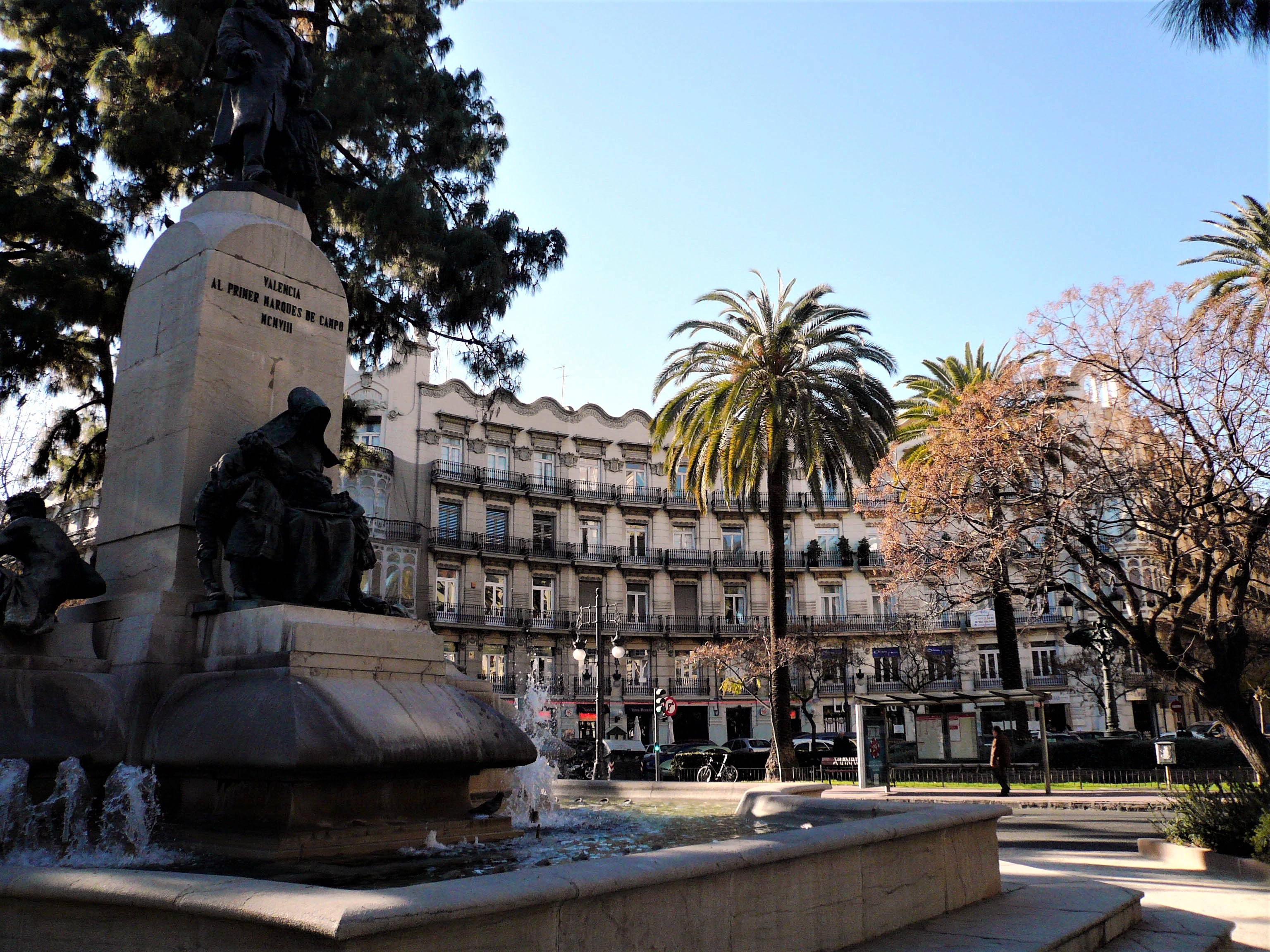Dyers have settled in this street since the 14th century, taking advantage of the water from the nearby canal of Rovella to wash the fabrics.
Between this square and Avenida de María Cristina, the convent of La Merced was located until 1840. The convent of the Mercedarian monks had been founded by King James I in 1238.
The sculpture of St. Martin and the Poor man was created by sculptor Pierre Van Béckere in the fifteenth century. This magnificent Flemish sculpture was bought and brought from Flanders to Valencia in 1494.
These sheds of the port of Valencia were built by José María Fuster and Fausto Élio. Its structure is metallic for the most part. They stand out for their modernist decoration in the side buildings, with reliefs alluding to commerce and navigation, and mosaics with fruits.
The stone pier was not built until 1685 and consisted of a simple boardwalk that jutted out into the sea. Until then it was made of wood and the transport was carried out to the coast with boats, these brought the goods from the ships located out to sea. But it was not until 1852 when the modern port started.
The name of this park comes from the rambla that formerly crossed these lands. The rambla has been recovered and surrounded by riparian forests.
The of the photo you can see the Chapa buildings (1909), made by three different architects, but who maintained the compositional unity of the façade. No. 65 of the Gran Vía Marqués del Túria conserves the original decoration inside.
This square was called, from 1936 to 1939, Plaza de la Generalitat de Catalunya.
The fountain in the middle of the square is a monument to the Marquis of Campo and was made by Mariano Benlliure.
The landscaping of the central space, of this Gran Vía, was designed by Francisco Mora in 1912. From its early days it still conserves the cast iron street lamps, which at the beginning of the 20th century still worked with gas.
The current bridge was built from 1518 to 1550. The old one was known to Muslims as Al-Qantara.
This bridge had two "casalicios" like the ones that now have the Trinidad bridge. They were destroyed during the War of Independence.
In 2012 it became pedestrianized.
Calle del Palau starts from the Romanesque façade of the cathedral. This late Romanesque façade is related to the Façade of the Fillols (Façade of the Ahijados) of the Seo Vieja de Lérida.
Near this door was the primitive bell tower of the cathedral, after passing the arch of Carrer de la Barchilla.
104 LA SEO NEIGHBORHOOD. Nules Square. Palace of the Real Maestranza de Caballería
- La Seo Neighborhood
- Hits: 637
In this square is the palace of the Real Maestranza de Caballería de Valencia (18th century), it is the building on the left. The Real Maestranza de Caballería was founded by Fernando VI, in 1754, in order to train horsemen for the regiments. The palace was renovated in the middle of the 19th century giving it a neoclassical appearance.
The Market Square is located in the old suburb of La Boatella. Jaime I granted a privilege in 1261 for a permanent market to be installed here.
The square was used to organize jousts and shows like those carried out by Alfonso the Magnanimous. It was also the place of executions since the beginning of the 15th century (the gallows was located here). It also served, from 1400 to 1859, to celebrate bullfights.
In 1878, the garden extended northwards reaching the Paseo de la Pechina and is configured as we know it today.
The first director of the Botanico, in its new installation on Calle Quart, was Vicente Alfonso Lorente, at the beginning of the 19th century. The new garden will host the plants on a frame system (Linnaeus system).
This beginning of the garden will be interrupted by the invasion of the French army and the War of Independence, which in this area of Valencia was very destructive. Lorente, the director of the Botanical Garden, was taken prisoner by the French and sentenced to death. He was saved by the intervention on his behalf of the French botanist Leon Dufour.
















